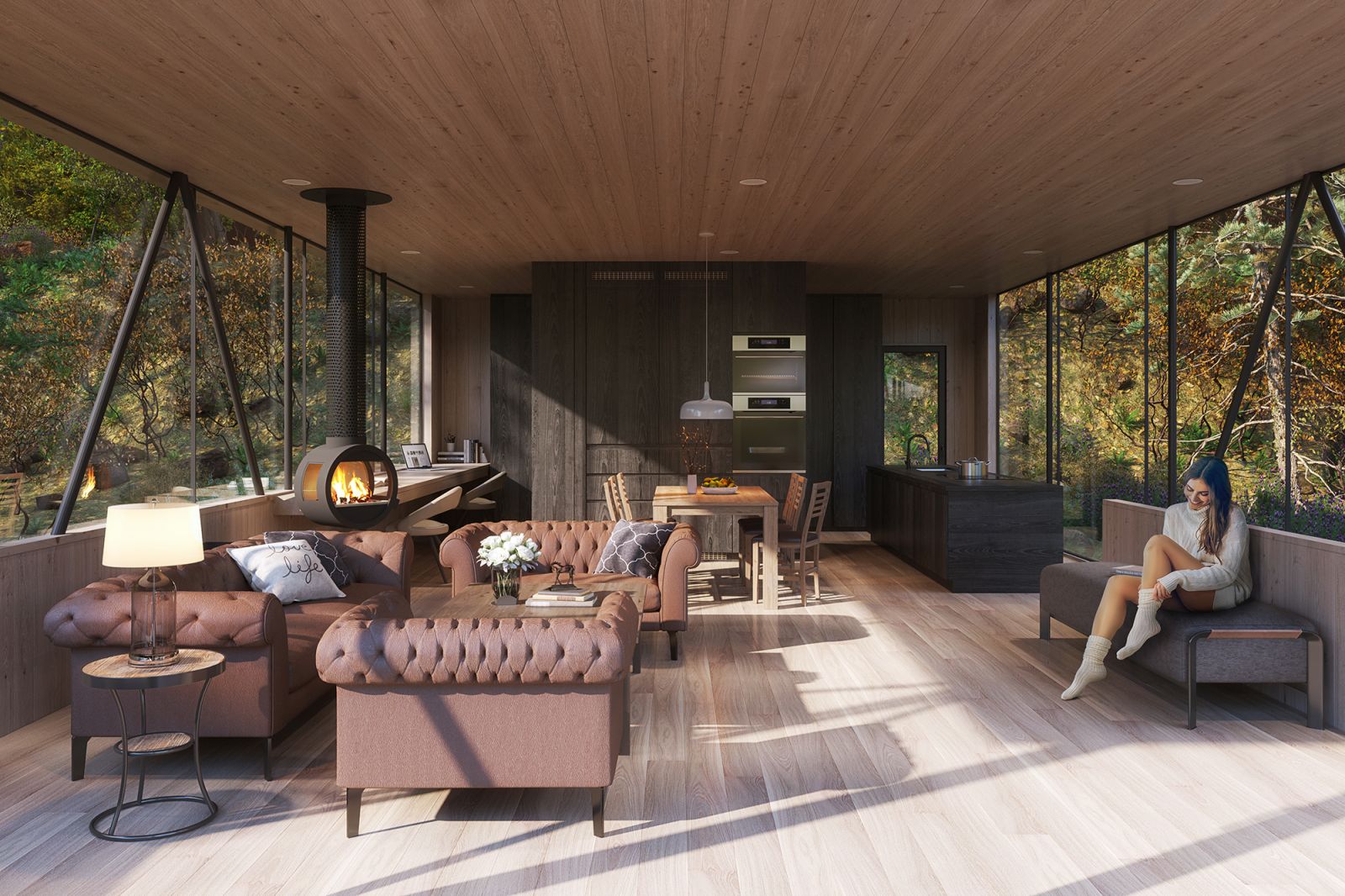Are you wondering about the process behind creating this type of digital representation? The magic behind creating a render involves sophisticated formulas and algorithms that simulate light ray interactions with objects. The computer analyzes various scenarios, organizing pixels through complex physics calculations to generate the final image.
Currently, there are numerous methods to create 3D imagery - each at different levels of complexity. However, to produce a quality render, professional expertise, photographic principles, and aesthetic sensibility are essential factors beyond the software itself.
How to start a 3D render?
If you desire to enter the world of 3D visualization, you have to consider the following steps to get started:
1. 2D Drawing- Idea
Every project begins with 2D design documentation or conceptual materials that articulate your vision. Comprehensive 2D drawings with complete details significantly expedite the 3D modeling phase, establishing a solid foundation for accurate translation.
2. 3D Modeling
From 2D drawings, various software solutions enable conversion to 3D models, each offering different advantages in terms of processing speed, detail resolution, and precision. To achieve quality rendering, a detailed, accurate, and optimally managed 3D model is paramount.
At CAV Studio, we maintain rigorous standards during this phase to ensure seamless workflow integration. We meticulously verify design accuracy, ensuring customer data integrity, spatial realism, and correct geometric representation that will translate authentically in the final rendering phase.
3. Material and Lighting
Material application focuses on accurately depicting surface properties to achieve photorealistic results - a process requiring both technical expertise and artistic skill. Lighting, however, represents one of the most challenging aspects of 3D rendering. Strategic illumination profoundly impacts architectural form, spatial perception, and the overall emotional atmosphere of the composition.
Rendering
Once the 3D model is complete with applied textures and optimized lighting, we proceed to the rendering phase. Processing time varies depending on computational resources and scene complexity.
It's crucial to note that creating compelling 3D representations requires thinking like a photographer. Mastery of compositional principles-proportion, balance, lighting hierarchy, overall harmony, and attention to detail - determines your ability to guide viewers through a visual narrative and evoke emotional engagement.

Conclusion
3D rendering is not just a technical process - it's a blend of architecture, technology, and visual storytelling. From the first sketch to the final image, each step requires precision, creativity, and a deep understanding of design intent.
At CAV Studio, we follow a clear and optimized workflow to ensure consistency, accuracy, and strong visual impact. Our goal is to transform concepts into compelling, photorealistic visuals that help clients communicate ideas clearly and confidently.
As the industry evolves, we remain committed to improving our craft and delivering exceptional value with every project. If you're ready to bring your vision to life, we’re here to make it happen.
Contact Us!
WhatsApp: +84865221179
Email: cooperate@cavarchitecture.com
Phone: +84905790968
Or fill out the project inquiry form here.





